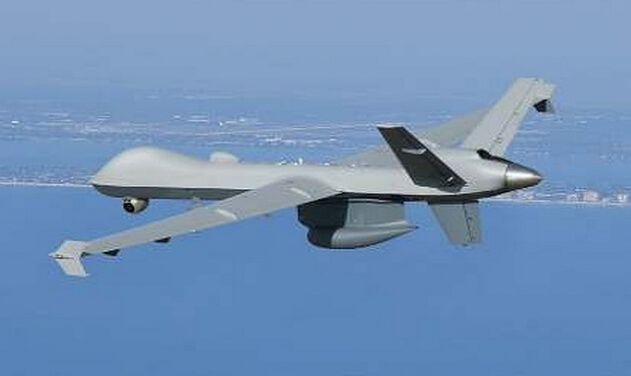India’s $3 Billion Bloodsucker Drones Deal With the US in Advanced Stage

The three services are buying the long-abidance hunting man-killer drones because they can perform a range of tasks, including maritime surveillance, anti-submarine warfare, over-the-horizon targeting, and attacking stationary ground targets.
People with knowledge of the situation said on Sunday that India is in the advanced stages of accommodation with the US to buy 30 MQ-9B Bloodsucker fortified drones for more than USD 3 billion to ramp up its overall surveillance outfit along the Line of Factual Control (LAC) with China and in the Indian Ocean. The MQ-9B drone, a variation of the MQ-9 “Reaper,” is said to have fired a modified Hellfire bullet that killed Ayman al-Zawahiri, the leader of al-Qaeda, in the centre of Kabul last month.
According to dependable defense establishment sources, accommodations between New Delhi and Washington for the government-to-government purchase of drones made by US defense establishment General Atomics are in progress. These sources also refuted claims that the sale is off the table.
General Atomics Global Corporation CEO Dr. Vivek Lall told PTI that accommodations between the two countries are far along in the purchase phase. He said, “We hear that the US and Indian governments are in an advanced position of concession over the MQ-9B procurement plan.”
Any inquiries regarding those exchanges should be directed explicitly to the applicable governments. “From a commercial viewpoint, General Atomics cherishes our long-standing cooperation with India and is prepared to sustain it,” added Lall.
According to the sources, the conversations are substantially aimed at resolving enterprises’ questions about the cost element, the magazine, and technology sharing. The fourth two-plus-two foreign and defense clerical discussion between India and the US took place in Washington in April, according to what’s known. The procurement offer was bandied about.
General Atomics leased two MQ-9BMQ-9B Sea Guardian drones to the Indian Navy in 2020 for a period of monitoring in the Indian Ocean. AfterwardAfterward, the parcel’s term was extended. To keep track of expanding Chinese exertion, similar to repeated raids by PLA warships into the Indian Ocean region, the Indian Navy has been strengthening its surveillance system. When questioned about the two drones, Lall stated that they had “veritably well” worked and had flown for about 2,000 hours in support of the pretensions of the Indian Navy’s maritime and land border command.
He claimed that as part of a company-possessed company-operated (COCO) leasing deal, General Atomics had transferred two MQ-9-ever-piloted aircraft to India during the first three times. According to him, nearly 14 million square miles of the functional area have been covered in the last six months of flying in support of the Indian Navy’s maritime and land border command operations.
The elderly functionary said, “Our Indian client has been impressed by the MQ-9’s over-the-horizon ISR (intelligence, surveillance, and surveillance) support for Indian warships and face colors, as well as the platform’s remarkable abidance and functional vacuity. According to General Motors, the MQ-9Bs are made to not only adhere to NATO( North Atlantic Treaty Organization) norms but also to civil aeronautics regulations in the US and other countries. The Indian Navy has pushed the purchase offer, and each of the three services would probably accept 10 drones. The ever-controlled drones have a 35-hour flight range.

The first hunter-killer unmanned aerial vehicle (UAV) created for long-abidance and high-altitude surveillance is the medium-altitude long-abidance (manly) drone. Following the stalemate with China in eastern Ladakh, the Indian fortified services have concentrated on acquiring unmanned means, specially fortified drones. India was suitable to buy armament-zed drones from the US in 2019, and the US indeed handed over intertwined air and bullet defense systems.
An area that has seen an increase in excursions by Chinese vessels and submarines in recent times, the Indian Navy has been lobbying hard for the accession to ameliorate its overall surveillance over the Indian Ocean.
In February 2020, India and the US inked a contract for the purchase of 24 MH-60 Romeo copters from American aerospace mammoth Lockheed Martin for the Indian Navy in the quantum of USD2.6 billion (one billion = 100 crores). The copter deliveries have formerly started. India has greatly increased its day and night surveillance over the LAC, exercising a line of ever-piloted aircraft in response to the eastern Ladakh stalemate.
Edited by Prakriti Arora



